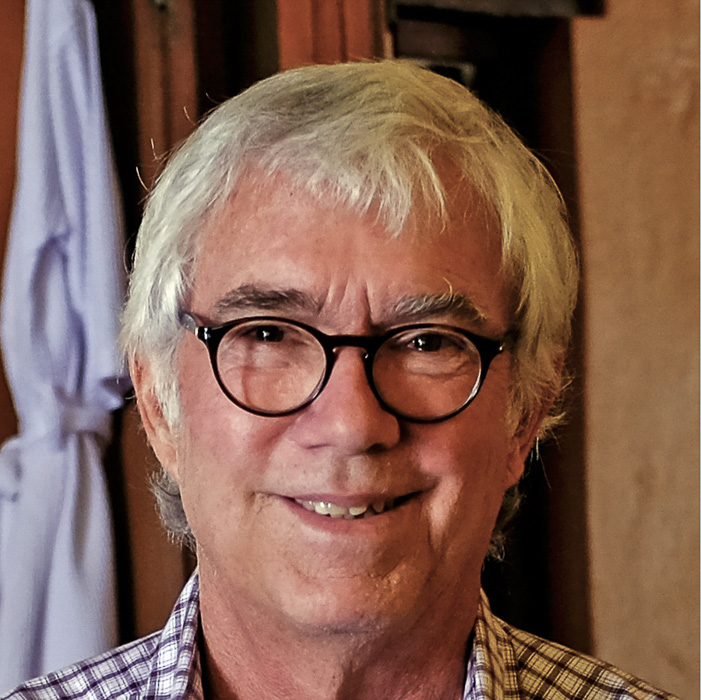Over the years I’ve written two non-fiction books on the fourth dimension, edited a book of C. H. Hinton’s writings on the fourth dimension, published a novel set in the fourth dimension, and worked the concept into a number of my other novels and short stories.
Shortly before Christmas, 2023, Jeff Carreira interviewed me about my thoughts on 4D for his ezine The Artist of Possibility, where it appeared in March, 2024, with the title “The Reality of the Fourth Dimension.” At one point Jeff contemplated a subtitle of “Knocking on Heaven’s Door.”
So here’s the interview, along with some related illos. Two of the illos, from Spaceland, are by Taral Wayne.
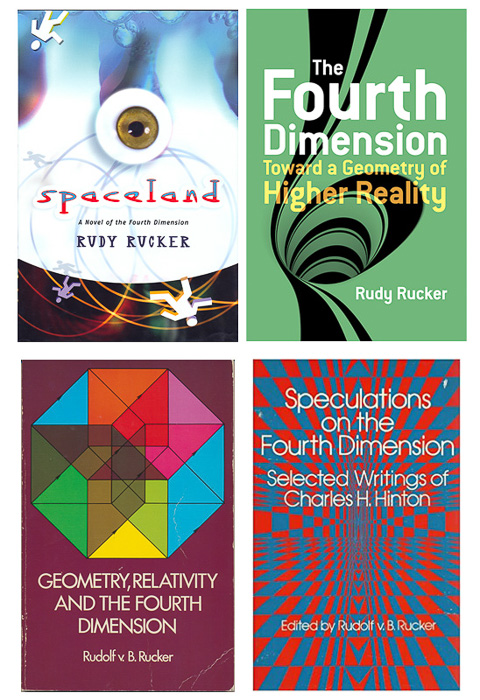
JEFF: Can you give us an introductory explanation of what the fourth dimension is and then tell us why you have devoted so much of your time to exploring and elucidating the idea?
RUDY: I first heard about “the fourth dimension” in science fiction stories, and I thought it sounded cool. I remember an anthology that had a 1929 story by Miles J. Breuer called “The Captured Cross-Section.” A four dimensional being’s body intersects with our 3D space, and the people in the story see a shifting, flailing ball of meat, with maybe a tooth or a claw on it…and they drive a long crowbar through the meat, and anchor the ends in concrete and supposedly that keeps the 4D creature from getting away, although why would you want it to stick around?
Right away I knew the fourth dimension was cool, and I wanted to know a lot about it. By the way, as a boy, the other big mathematical topic I wanted to know about was infinity. And somehow my life worked out so that I published books about the fourth dimension and about infinity. I’ve been lucky; my dreams came true.
So what is the fourth dimension? The first thing to understand is that “fourth dimension” can be used in various ways. People often say that time is the fourth dimension and leave it at that.
But I want to talk about a mathematical, geometric fourth dimension. A point is 0D, a line is 1D, a flat square is 2D, a cube is 3D. So what about aa 4D hypercube? Well, it’s sort of like two cubes connected at the corners—maybe you’ve seen an image like that, and it’s often called a tesseract. But the slanting lines between the corners shouldn’t really be in our space. How do we imagine a direction that’s not in our space?
The traditional method is to reason by analogy. You think about a 2D being who lives in a plane, and wonder how this being could imagine the third dimension. We get this approach from Edwin Abbott Abbottt, who wrote a wonderful 1884 tale called Flatland, featuring a character called A Square.
(Just in passing, isn’t it great that Abbott has the same middle and last name? And two T’s in each of those. Like the two cubes we’re trying to connect to make a hypercube. And note that his publication date’s digits are kind of like that too. Two 8’s and 8 is two times 4. Mathematicians notice things like this. Numbers speak to us..)
A Square slides around in Flatland, and he can’t imagine the third dimension because it’s a direction completely different from any direction he can point to or move in. And that’s we’re at relative to the fourth dimension. We can’t move in that direction, but even so it exists.
I’m not going to give a full recap of Flatland here, but you ought to read it.
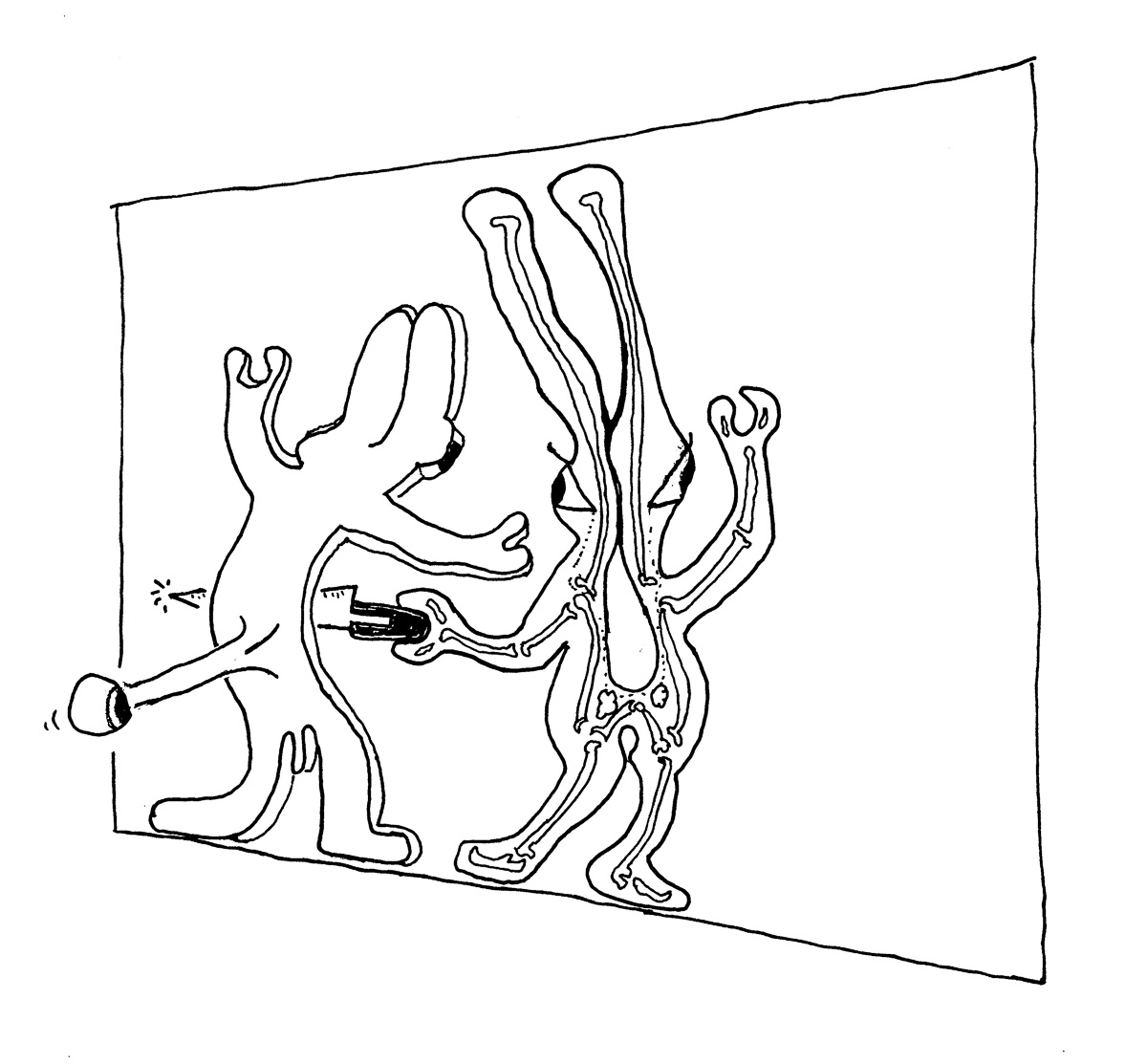
JEFF: Tell us about your own books on the fourth dimension.
RUDY: The first book I ever wrote was Geometry, Relativity, and the Fourth Dimension, in 1976. I was a long-haired thirty-year-old math prof at a small college in upstate New York, bascially a hippie with a wife and three kids, and about to get fired for not being square.
Dover Books paid me a thousand dollars for the book, and I think by now they’ve sold three hundred thousand copies. They’re a little embarrassed about it, but not embarrassed enough to pay me more money. I love them anyway. They gave me my start.
Oddly enough, this first effort of mine was the most successful book I ever wrote, with about forty more books to come—science books and science fiction novels. And I wrote another 4D science book, The Fourth Dimension.
If you’re curious, you can can read all of my science books for free online. The links for the books are here:
https://www.rudyrucker.com/blog/rudy-rucker-free-books/
Why would I post my books for free online instead of making people buy them? Two reasons. Primarily, I think the information in these books is important, even life-changing, and I want people to read it. I want to infect their minds. Secondly, if I give books away, it builds my brand. Name recognition is an author’s lifeblood.
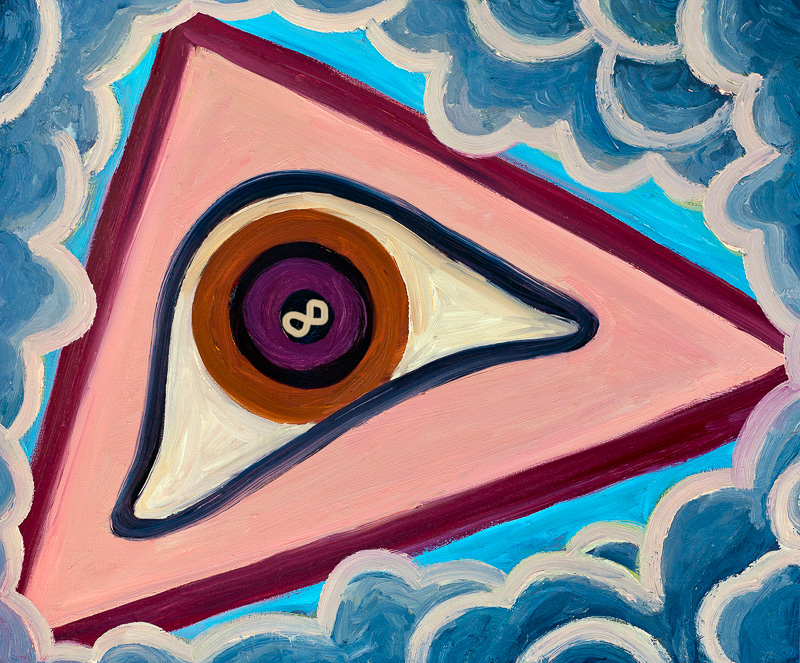
JEFF: And how about the fourth dimension in physics?
RUDY: In the special theory of relativity we speak of time as a fourth dimension. In general relativity, we explain gravity by saying that 4D spacetime is curved in still higher dimensions. Cosmologists suggest that the space of our universe as might be curved into a 4D hypersphere. Or that possibly it’s “negatively curved” like a saddle, and it’s infinite.
The popular notion of a multiverse speaks of alternate parallel universes stacked in a higher dimension. Particle physicists suggest that our space might have a slight 4D hyperthickness. And string theorists talk about using ten or eleven dimensions—although they pretty much waste all those nice dimensions by curling them into tiny loops. Vermin dimensions, as my SF friend Bruce Sterling calls them.
As a mathematician, I have limited sympathy with the speculations of physicists. I almost want to say that they’re bullshitters who make it up as they go along.
But, oops, that’s what science-fiction writers do! Pile on the bullshit and keep a straight face. But we don’t claim that what we say is really true!
Re. modern physics, it’s less than two centuries old. And compared the the universe, we’re like tiny protozoa in a puddle. How likely is it that our physicists have the final answers?
My sense is that you’re more likely to find the truth if you look into your own mind. You don’t need any special equipment for that. Ultimate reality is right there in your head. But for some reason we tend not to pay attention.
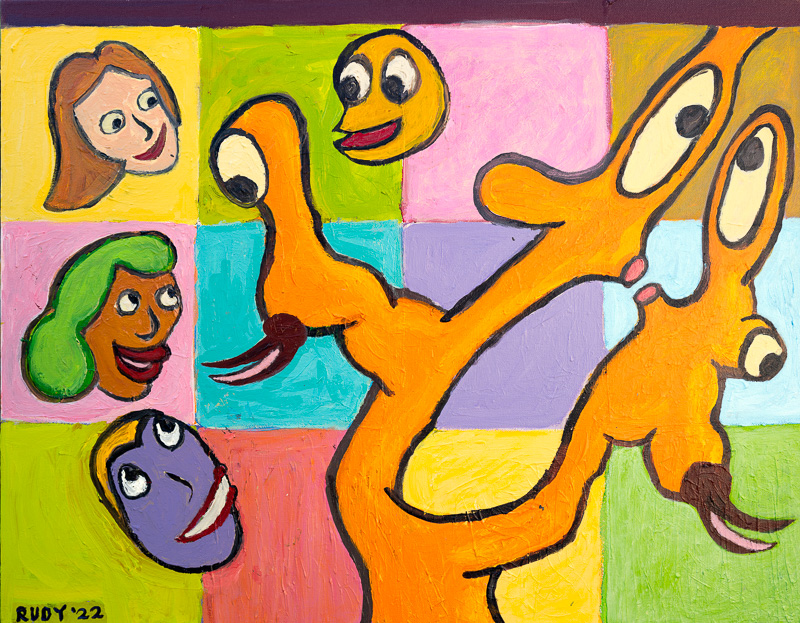
JEFF: I find the fourth dimension a valuable way to understand my spiritual experience. Can you talk about that?
RUDY: Yes, higher reality has higher dimensional aspects.
We can go all the way back to Plato’s allegory of the cave. He speaks of a group of people in cave, watching shadows move on the cave’s rear wall, and never realizing that the true reality is the world of objects behind them. The great P. D. Ouspensky wrote about this.
Sadly, Plato’s cave people resemble what we’re turning into, all of us staring at our phones, even as we walk around outside. Portable caves!
Despite what I said in the last answer, I do in fact admire physics. It’s very useful to imagine the world as a 4D spacetime pattern. Philosophers of science call this the “block universe” model. The past isn’t gone, it’s “underneath” us. And this is a weak form of immortality.
“We’ll always have Paris.”
My beloved wife Sylvia died in January, 2023, and immortality is much on my mind. And it is indeed soothing to look back on the shape and the particulars of the life we had together. Not only does she live on in my heart and in my mind—she lives on in spacetime.
But I’m lonely, and I want something more than a pattern in spacetime. Among nineteenth century spiritualists it was common to say that ghosts live in the fourth dimension. It’s convenient. They can hover just above you, up in the fourth dimension, and suddenly dip down into your zone. I wrote a section about the history of this idea in my book The Fourth Dimension.
I like going to the bluffs in Santa Cruz, and watching pelicans fish. They glide along over the wrinkled surface of the sea and then, spotting something, they rise up, and then plummet down, beak first, grabbing a fish. For a fish in the sea, the surface looks like a mirror. What a shock to have a pterodactyl-like beak come spearing in.
Not always such a good thing to have a ghost pop into the room! This brings us back to Miles Breuer’s “Captured Cross-Section” a little bit.
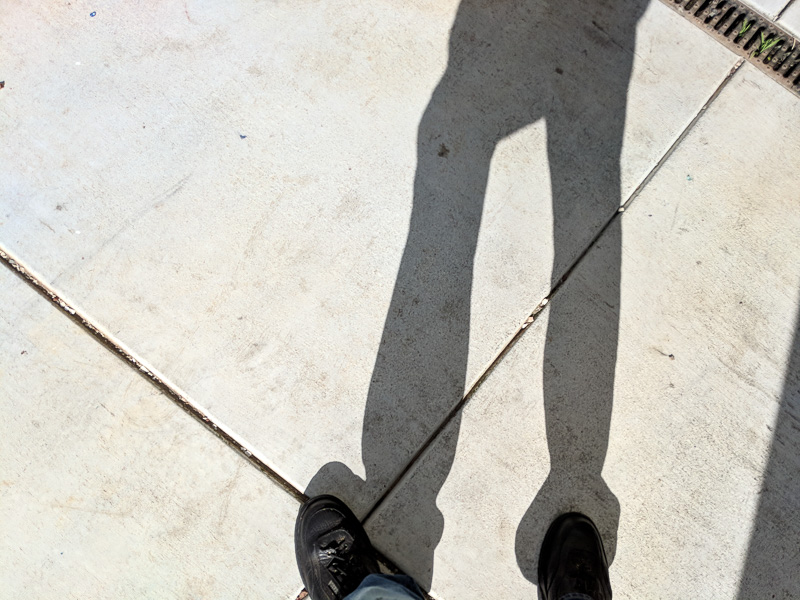
JEFF: Do you think our physical bodies might have a 4D hyperthickness?
RUDY: In Flatland, the hero A Square travels up out of his 2D Flatland, and he moves around in 3D space.
In 2002 I wrote a 4D version of Abbott’s story: a novel called Spaceland. My book is about a Silicon Valley middle manager who travels into the fourth dimension and meets the beings there. At the end he finds a way to create wireless antennas that project out into 4D space so that their signals aren’t hampered by buildings. (Kind of a joke ending.)
A point I get into in Spaceland is that if you were in fact able to go up into 4D space, your body would need to have a hyperthickness to it, and some hyperskin, otherwise your guts would fall out on the open sides.
Note also that our universe would divide hyperspace in half, like a plane bisection 3D space. You can go all traditional and say “heaven” is on one side and “hell” on the other.
I had fun writing this book; things really came together, and I did some good thought experiments. It was especially challenging to imagine what a 4D eye would see.
Not that I seriously think Spaceland is true. I don’t see there being a bunch of 4D ghosts or guardian angels or evil spirits hovering around our space. This is of course a popular convention in horror stories, but I feel reality isn’t so heavy handed and obvious. Horror is corny. Nature is subtle, graceful, and warm.
But if we don’t have 4D ghosts, is there any hope of immortality? How about this: the ghost of a lost loved one is literally living in your heart and mind. And this isn’t meant as a platitude. The ghost is a living pattern that’s in your system. It’s like a thought, or a memory, or a dream, or an emulation—and it’s not under your control. An autonomous entity who, if you’re lucky, loves you. And if you’re unlucky, they don’t.
And here we face the old dichotomy of guardian angel vs. mean devil. Human traditions tell us that you want to be on good terms with your ghosts. Your ancestors, your lovers, your friends. All those who live within you. Honor them. Make offerings to them. And if you’re hosting a demon, boot it out. Or starve it with lack of attention.
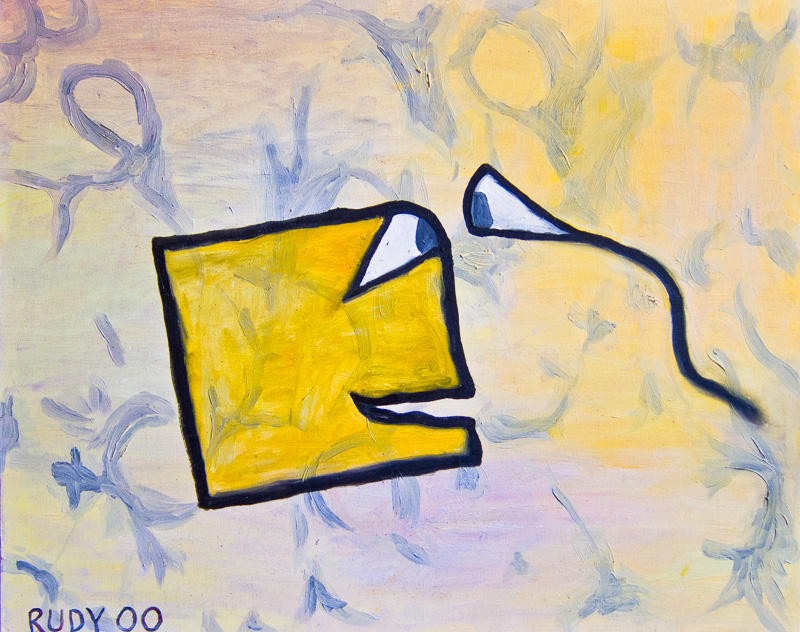
JEFF: Can you talk about how this relates to spirituality and mystical states?
RUDY: So many possibilities. I’m intoxicated by my word hoard. Having fun. Thanks for asking all these good questions!
For me, the key spiritual or mystical thing is to view the world as a cosmic unity, and to be in touch with this. Looked at in a certain way, each part of the world is alive and conscious, and we join in a beautiful dance, parts of the cosmic One.
Not that, of course, it has to be called the One. It can just as well call it the Many. Two sides of the same coin. You know the saying: a great truth’s opposite is also a great truth.
In either case, One or Many, I want to move beyond my weary frame, discarding my fears and my remorse—and finding peace.
I sometimes think of the universal mind as a higher-dimensional mollusc that pokes out little tendrils, like a snail’s horns. The horns are the people. And each horn has an eye, looking at the others.
“Hi, it’s me.”
God seeing god.
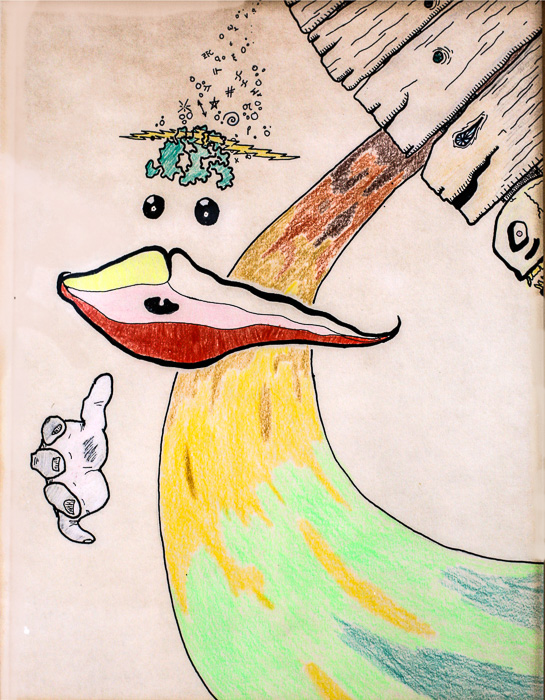
JEFF: What would it mean for us to expand our thinking to higher dimensions?
RUDY: When I want to go fully ape with higher dimensions, I talk about Hilbert space, a mathematical construct invented by David Hilbert. Hilbert space has infinitely many dimensions.
It’s a little like the inside of your mind. You don’t really think in terms of a mere three or four dimensions. You see layers, patches, and blobs—blending and differentiating like paints on a palette.
Recently I was thinking a lot about the Hilbert-space mind model, trying to bring it to life for some scenes in my novel, Juicy Ghosts. As always when I’m writing one of my SF novels, I know it’s a surreal fantasy, invented almost at random. But while I’m writing it, I pretend that it’s true—and see what happens. I put myself into a world and I see what happens. It’s a type of thought experiment. Or, as the German philosopher Hans Vaihinger put it, “ein philosophie des als ob” that is, “a philosophy of as if.”
Certainly our minds are more like Hilbert space fractals than they are like feeds from surveillance cameras. And, while in iconoclastic mode, let me point out that we don’t really really think logically. We don’t actually sit around deducing things.
Thought is all about feelings. A process of free association. A stream of consciousness. “What does this remind me of?”
The latest AI flavor-of-the-month is ChatGPT, a type of “large language model.” It’s a way of emulating our process of free association, and it does this so well that the outputs seem almost human.
Bringing the topic of dimensions back in, these large language models have billions or even trillions of parameters. And, if you like, you can think of each parameter as an axis in a multidimensional space.
With so many axes, you’re more or less in Hilbert space. So looking for a good set of parameters is a bit like roaming around in Hilbert space, looking for a sweet spot. A nice hilltop for a picnic.
Changing gears, the weirdest, most incomprehensible theory of the world is quantum mechanics. And a full quantum mechanical model is a shifting pattern in—where else but Hilbert space?
4D is for lightweights, dude. Hilbert space is where it’s at. Glowing brain goo.
Are you high yet? That’s what a rap like this is for.
In this context, I might as well mention that I’ve been clean and sober since age fifty. That’s twenty-seven years.
We don’t have to get high. We are high. All you have to do is notice.
We’re patterns in Hilbert space, and nothing matters.

JEFF: Okay, that sounds nice, and I’m enjoying the flow, but can I be so bold as to say I don’t know what you’re talking about? What exactly do you mean by saying my mind is a pattern in Hilbert space?
RUDY: Thanks for asking. That helps me. As I keep hinting, I’m making this up as I go along. I don’t know where it comes from, and I don’t know where it’s going. But this is how I work. This is how I get my ideas. I write or say something, and then think about the new rap for a few days, pushing it further. And maybe then something falls into place.
So ever since yesterday, when I wrote that last answer, I’ve been focusing on my stream of consciousness and trying to see what it is.
I see something like a mass of macaroni with a central region lit up. Or a hollowed-out zone with a bunch of passages leading off of it, and maybe I’m looking into a number of the passages at once. Shining my attention into them, and each passage leads to as-yet-unformed further branches.
Right now I’m writing this, and each word and phrase sets off associational thoughts. Maybe it’s not really like branching paths after all. Maybe it’s more like being in a crowd with companions pressing up against me and accompanying me for a little while..
The forks, or the temporary companions, or the “next thoughts”—they’re like the phrases produced by a Rudy-tuned large-language-model ChatGPT process. Outputs of Rudy’s Lifebox, draw up from my memory hoard, selected on the basis of closeness to where I’m momentarily at.
Many of them are dim and cringing, like uninvited guests, unsure if they’re welcome, and not fully brought into the light. But even so they’re present, at least in my peripheral vision, and I love them them, as they’re part of my life and mind, but even so I wat to get on with the coherent stream I’m hoping to craft. Hoping to wind up this phenomenological investigation that I’m laying down.
And, um, you asked how this relates to Hilbert space?
Okay, got it.
Each possible line of thought is a alternative direction for the flow of my stream of consciousness. And it’s convenient to say that taking a different direction is like moving along a different dimension. Going off o a fresh tangent.
And there are so many possible dimensions of thought that we might informally speak of them as infinite various. And this means we’re in Hilbert space, baby.
So here I am, in the lambent laptop glow of my thoughts, relaxing into my performance space.
And maybe it’s not so much that I’m going anywhere. Maybe I’m not worming through the macaroni, or pushing my forward. It’s more like I’m a gentle mosh pit, and the endless shades are dancing with me.
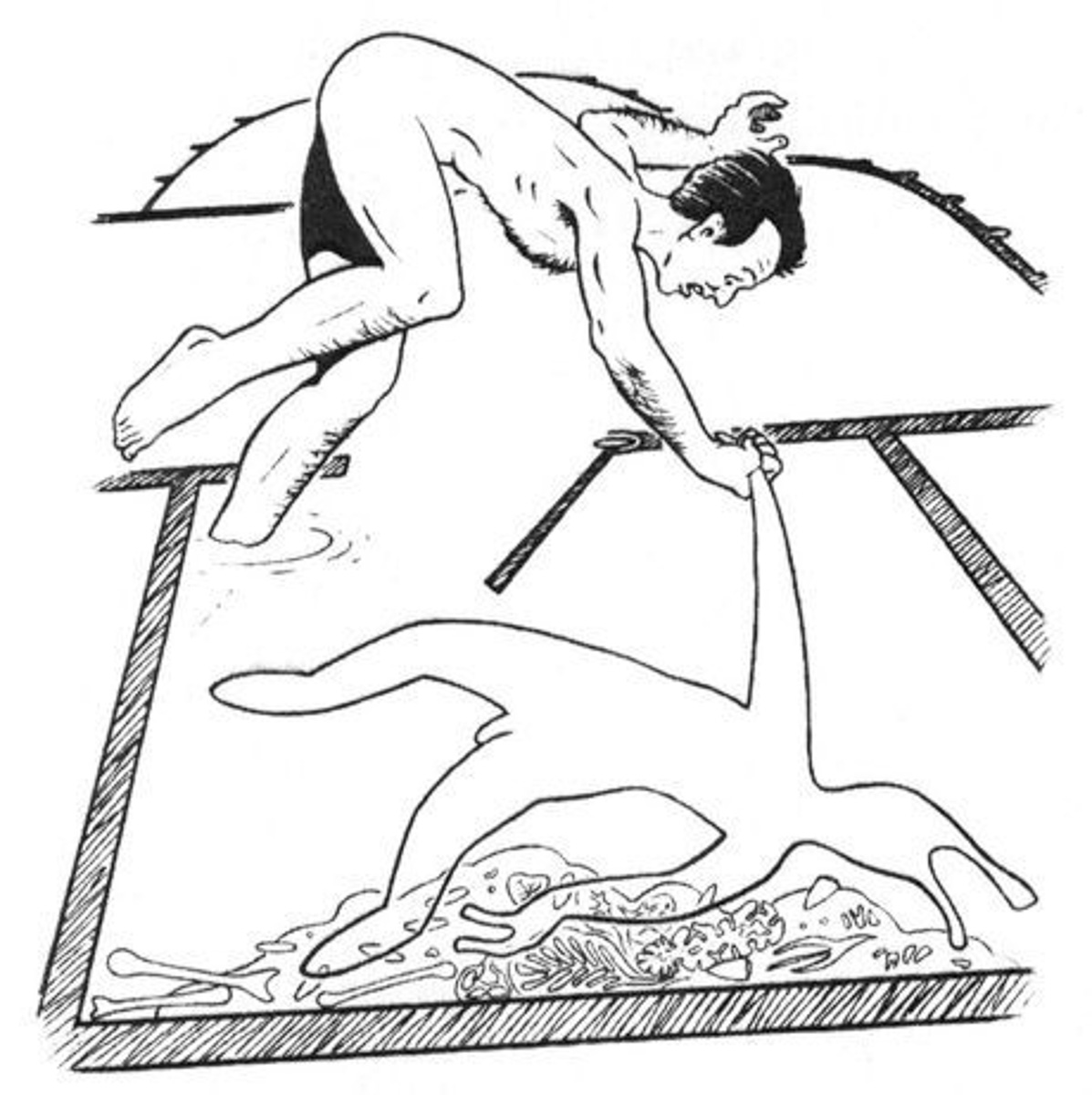
JEFF: This is getting pretty trippy. I’m intrigued by the title of one your novels, The Big Aha. What’s that one about?
RUDY: When I wrote this one I was thinking about the Sixties, and about Tim Leary in Millbrook and William J. Craddock in San Jose. These guys were taking acid nearly every day. And I was was wondering, “What if there was some SF way to make this work?”
Note that I’m not an acidhead. I really only took it once. But I saw the White Light, and that was enough. I remember it very well. The White Light talked to me. It said, “I love you, Rudy. I’ll always be here.”
In The Big Aha I didn’t want to use garden-variety psychedelics, as that carries so much baggage with it. I mean, face it, psychedelics didn’t really work out as well as the pioneers had hoped! Certainly there were lots of good trips—but we’ve also seen sadness, strife, and greed.
Mystical illumination is still the dream. So I wanted my characters to get high on…something that wasn’t a familiar a drug.. I came up with some telepathy-inducing quantum wetware. Philosophie als ob! And the book was pretty cool.
But, in the end, I felt like people maybe dismissed it as a drug book anyway. Some critics tend to be suspicious of me. Like I’m trying to get away with something. I’m not square enough.
I guess the problem is that mystics tend to sound like stoners. Even when we’re not.
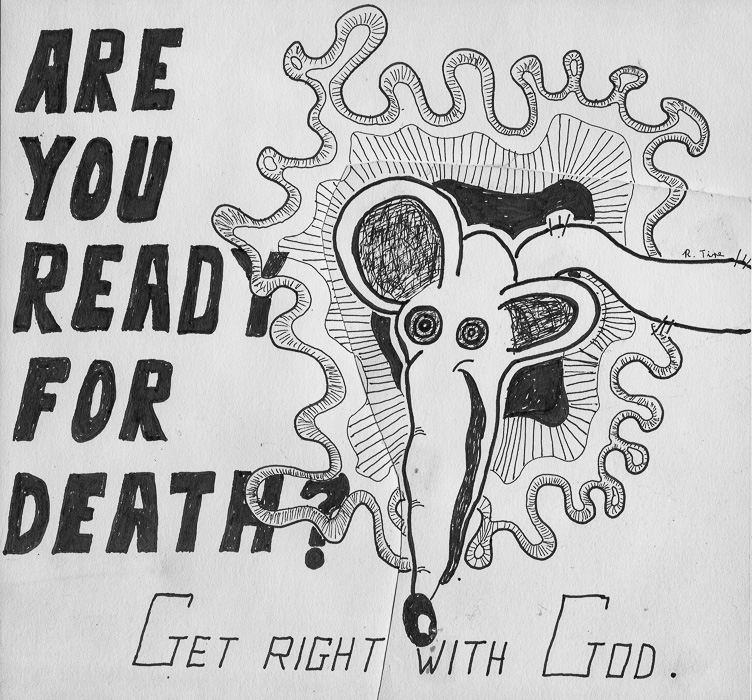
JEFF: In addition to being a writer, you had a career as a professor of mathematics and computer science and have written about what you call gnarl. What is gnarl and what did your exposure to it teach you about life?
RUDY: Surfers say a wave is gnarly if it’s very richly patterned and intense. Foods or situations can also be gnarly. “Gnarly, dude.”
Originally a gnarl is the part of a redwood or an oak tree at the base or at a knot, where the wood is all warped and twisted around, and if you polish a piece of that, you see these really intricate curves and folds.
In 1974 I got my Ph.D. in the mathematics of infinity, and that was pretty gnarly for sure. The proofs were insanely complex. I wrote about what that’s like in my novel Mathematicians in Love. The best analogy I could find for math proofs was Dr. Seuss drawings.
When my family and I moved out to San Jose in 1986, I switched from teaching math to teaching computer science at SJSU. All my life I needed a day job as a professor. Sylvia had a good teaching job, but I never made enough money from my books to pay my share with that.
I really liked doing computer science. I liked the experimental aspect of it. Thought experiments! My thing was generating gnarly graphics from relatively simple mathematical formulae. Fractals are a well-known example of this, particularly the celebrated Mandelbrot Set. And I discovered a multi-dimensional Mandelbrot Set that I looked at a lot. I called it the Rudy Set. If you Google it you can find it.
Seek the Gnarl.
As it happens, that personal slogan of mine is engraved with my name on the granite headstone that stands by Sylvia’s grave. Sylvia’s name above, my name below. I’ll join her in a few years. Her slogan is Carpe Diem. Means “Seize the Day,”
Chaotic processes are another source of mathematical gnarl. You take what seems to be some simple rules for how a dot on the screen will move, and they get into never-repeating oscillations and layers of intricate patterns. Flocking algorithms and cellular automata are rich sources of computer gnarl as well.
But never mind the computers. Over time I’ve learned to see gnarl all around me. Right there in nature. Particularly in clouds, the wobbling of leaves in a breeze, and above all the ocean.
If you don’t pay attention, the ocean might always seem to look the same. But, no, it’s a gnarly chaotic process. The details are always different. You could watch waves hitting a rock for a hundred thousand years, and it would never be exactly the same.
Before fractals and chaos theory, people didn’t used to grasp that gnarl is good. It’s not a flaw, or an error, or a defect. It’s what there is. Chaos is health. Life is gnarl.
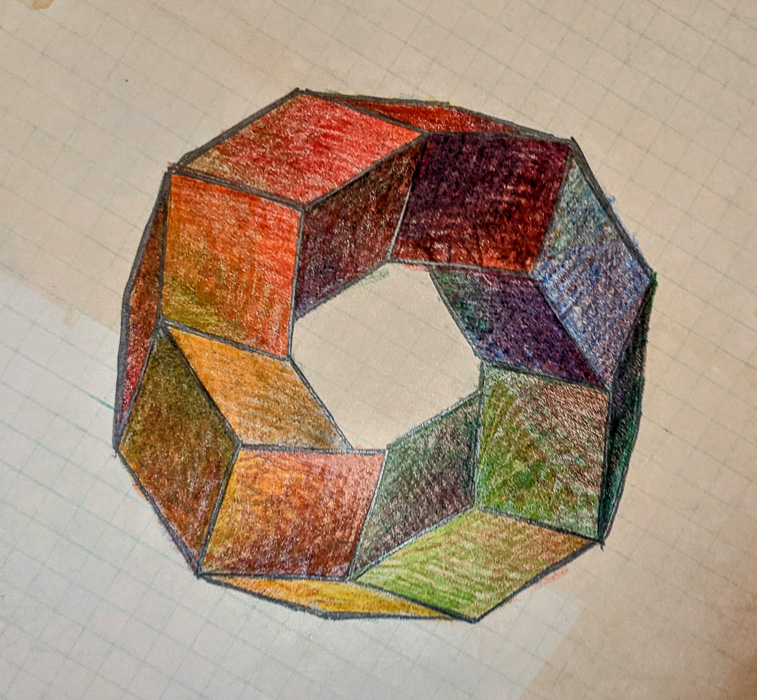
JEFF: You write fiction in a style you call transrealism. What do you mean by this, and how do you see your fiction as a vehicle for expanding consciousness into four dimensional thinking?
RUDY: I feel that SF needs to have realistic human chracters to be fully engaging. So I very often base my characters on myself, my family, my friends, or even people that I know only casually. That’s a thing that the Beat authors used to to.
If you want to bring dimensions into it, you might say that my transreal stories are an overlay on reality, slightly displaced into the fourth dimension.
But there’s more to it then that. In a deeper sense, transreal writing can mean more that connecting characters to actual people. My transreal practice applies also to a story’s themes, scenes, actions, phrases, and even words. That is, I’m writing with my full attention, then every part of my tale connects to essential parts of my life.
A raygun might look like a water pistol I had. An ambush might be a reworking of a trick someone played on me. A spoken phrase might come from something I heard on the street, or in a conversation. A made-up futuristic word might be a combination of several words or phrases that are significant to me.
Many writers do things like this, but I’m putting a special emphasis to the practice by calling it transrealism. We’re talking writing that is utterly original, and is taken from your experience. No second-hand dreams wanted.
Nonfiction can be transreal as well. Indeed my answers to the questions in this interview are transreal in that, by writing this material, I’m trying to find out who I am, and what I think, and what I might think next. My method is to throw more and more of my experience into the brew.
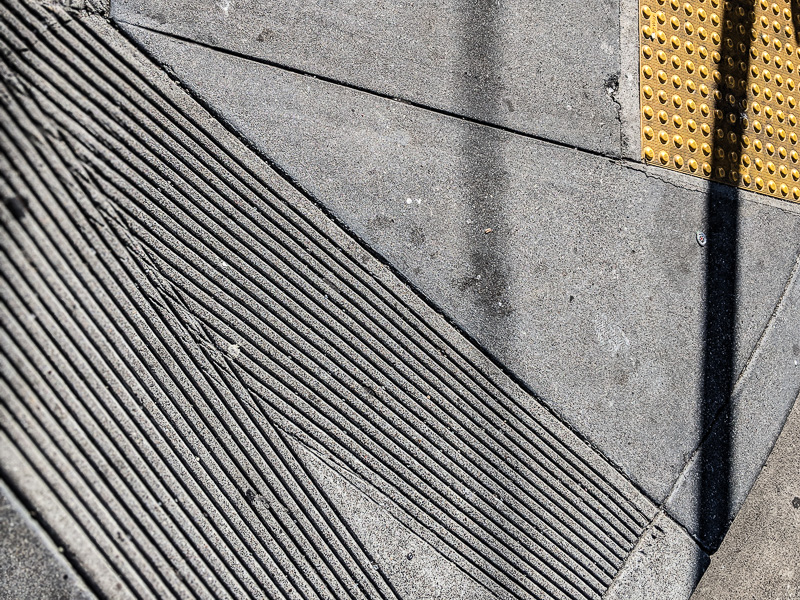
JEFF: You’ve lived a fascinating life exploring some of the most progressive edges of thought, can you tell us about some of the people who have most influenced your own thinking?
RUDY: Try Kurt Gödel, Martin Gardner, William Burroughs, Allen Ginsberg, Robert Sheckley, Dennis Poague, Ivan Stang, Bruce Sterrling, William Gibson, Benoit Mandelbrot, John Walker, Stephen Wolfram, Ken Goffman, Diana Vaughan, Eileen Gunn, Faustin Bray, Sylvia Rucker, Terence McKenna, and Tim Leary.
But I don’t have time to excavate the details. You can read about some of these characeers in my Collected Essays. And others in The Lifebox, the Seashell, and the Soul. And still others in my autobiography Nested Scrolls.
Or try the online search-engine model of me that I call Rudy’s Lifebox. See https://www.rudyrucker.com/blog/rudys-lifebox/
Seek and ye shall find.
Thanks for interviewing me, Jeff!
And stay high.
